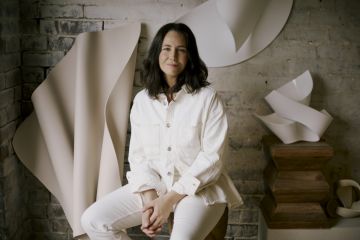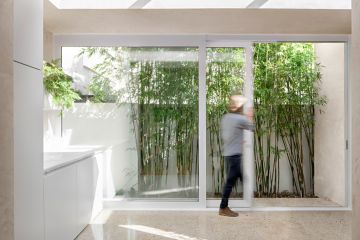The Melbourne-made clay lamps lighting up everything from homes to Dior installations
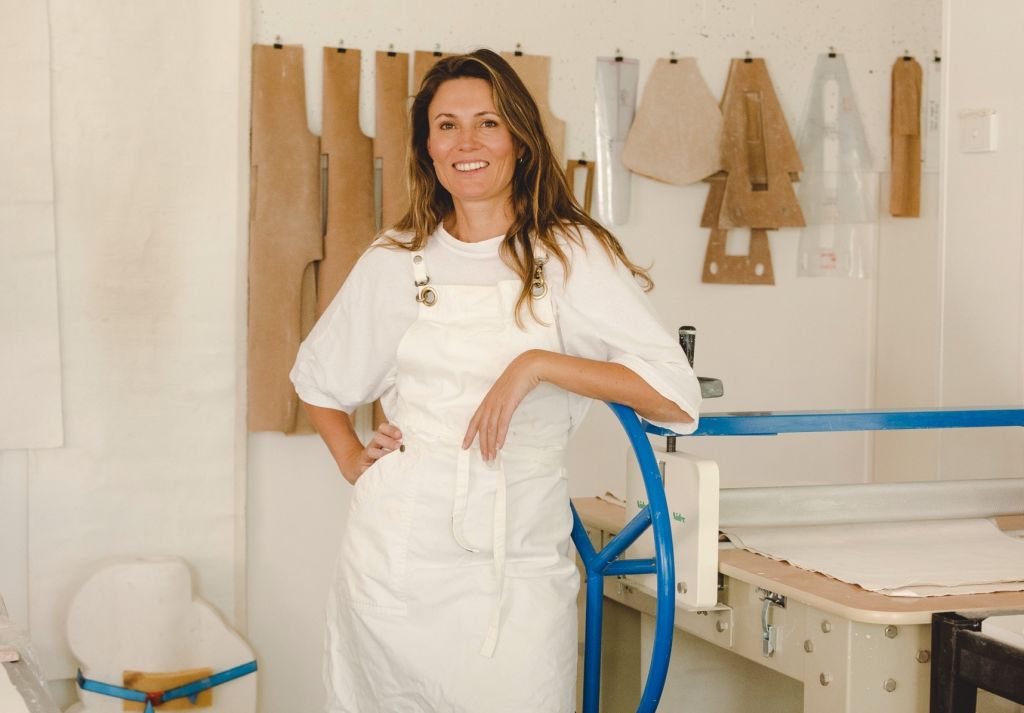
For Sarah Nedovic, working with clay is almost a form of meditation. “It’s a sensory thing – you open a bag of clay and it smells like rain. And when you touch it, you can’t look at your phone or do anything else because you have clay on your hands. So you think, ‘Okay, I’m here and I’m in this moment.’”
In Nedovic’s hands, the clay will eventually be transformed into a light. Each one is made to order from her Botanic Gardens-adjacent South Yarra studio (which once housed a gym) where she now works with two colleagues.
Sculptural and minimal in form, her ambient lighting sits somewhere between art and design, and is favoured by architects and designers, with clients including Tamsin Johnson and Arent & Pyke. In 2022 Dior Institut Paris even commissioned two of Nedovic’s lamps for its floating spa on the Seine.
Used in both commercial and residential settings, Nedovic’s work has been featured in magazines such as Vogue, Belle and Architectural Digest, and was exhibited as part of a collaboration with stylist Stephanie Stamatis during Melbourne Design Week last year. (She has two exhibitions in Melbourne Design Week this year, working with Duetto Studio and glass artist Ruth Allen.)
“Designing objects that have a purpose is really important to me – I remember asking a friend many years ago for his opinion on a design idea I had. He simply said, ‘It will work if it makes sense.’ I often come back to that – why am I doing it, what is the outcome, what is the relationship to the piece. Storytelling and connection play a big part in how I like to design.”
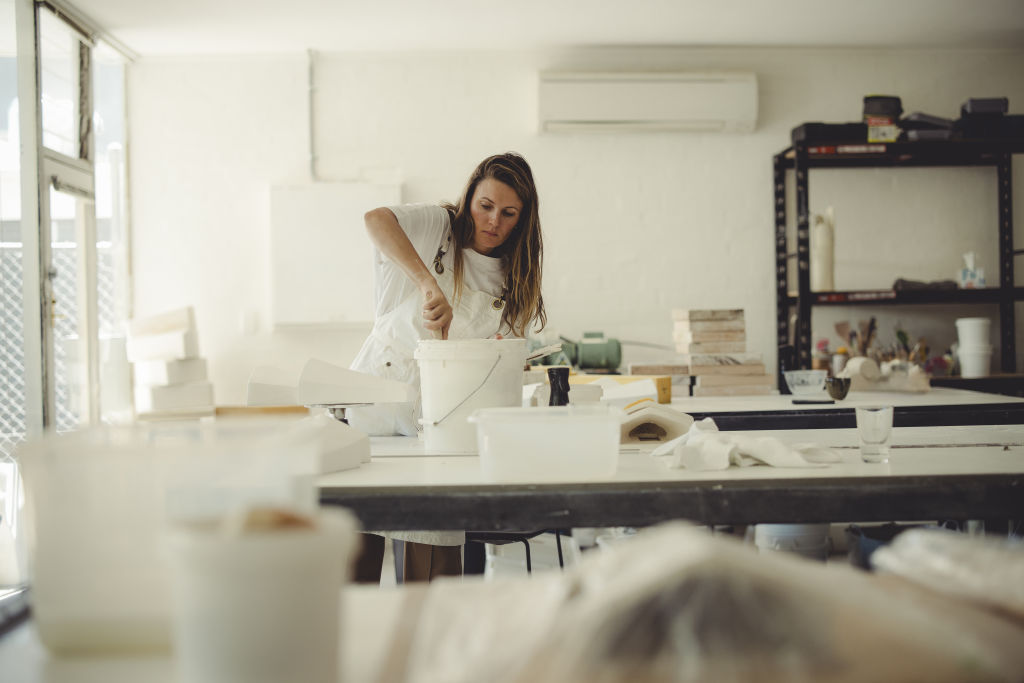
For Nedovic, part of that connection involves not only the emotional response we have to lighting but also the ritual attached to it. “When it starts to get dark, the overhead lights go off and the table lamps and wall lights come on. For me it’s a trigger to switch into relaxing mode,” she says.
“I like making objects that have a purpose, and lighting is emotive – it can really set the tone of the space … I feel like I can be more experimental with my designs going forward, and these bridge a space between wall art and functional lighting.”
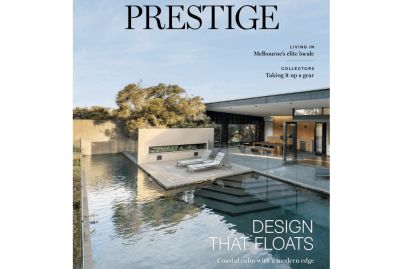

Almost invariably, Nedovic’s pieces will be oversized. “They have a presence beyond being just an object; scale makes them feel like something else.” But making such large work carries risks, she says. “If you’re not supporting it in the right way and it gets bent, you might be able to straighten it up when it’s still wet, but because clay has a memory, as soon as you put it into the kiln, that bend will come back.
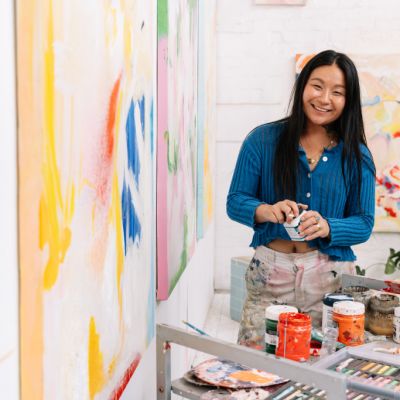 The butterfly effect: Marisa Mu is making big waves in the art world
The butterfly effect: Marisa Mu is making big waves in the art world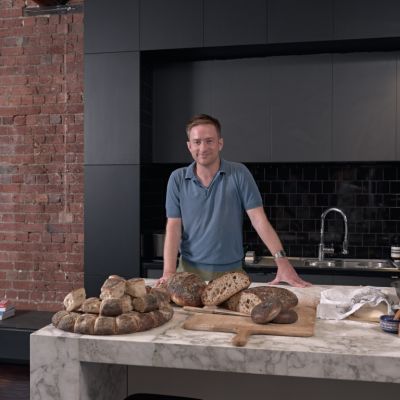 Home breadmaking 101 with Baker Bleu founder Mike Russell
Home breadmaking 101 with Baker Bleu founder Mike Russell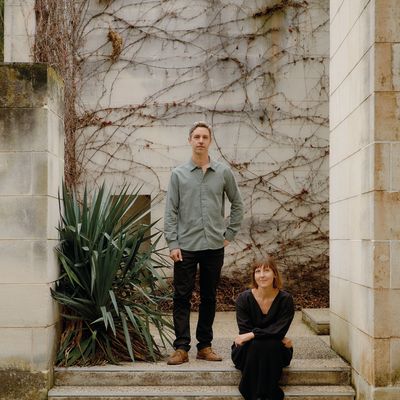 The Melbourne couple making waves with their bespoke furniture collections
The Melbourne couple making waves with their bespoke furniture collections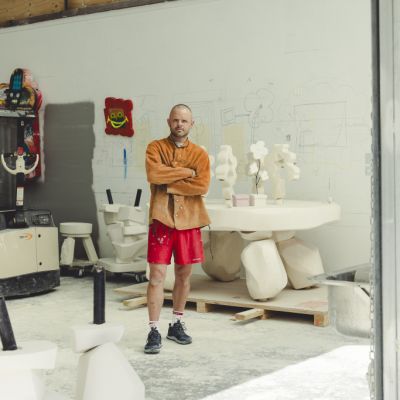 Old meets new: Meet the artist bringing a modern touch to the ancient craft of stonemasonry
Old meets new: Meet the artist bringing a modern touch to the ancient craft of stonemasonry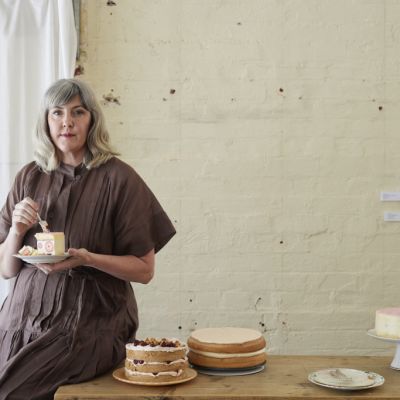 Beatrix Bakes founder Natalie Paull is back for another slice of cake
Beatrix Bakes founder Natalie Paull is back for another slice of cake
“I did a lot of horseriding growing up and the animal can sense your fear. It’s almost like that with clay, you have to work slowly and treat it with respect.”
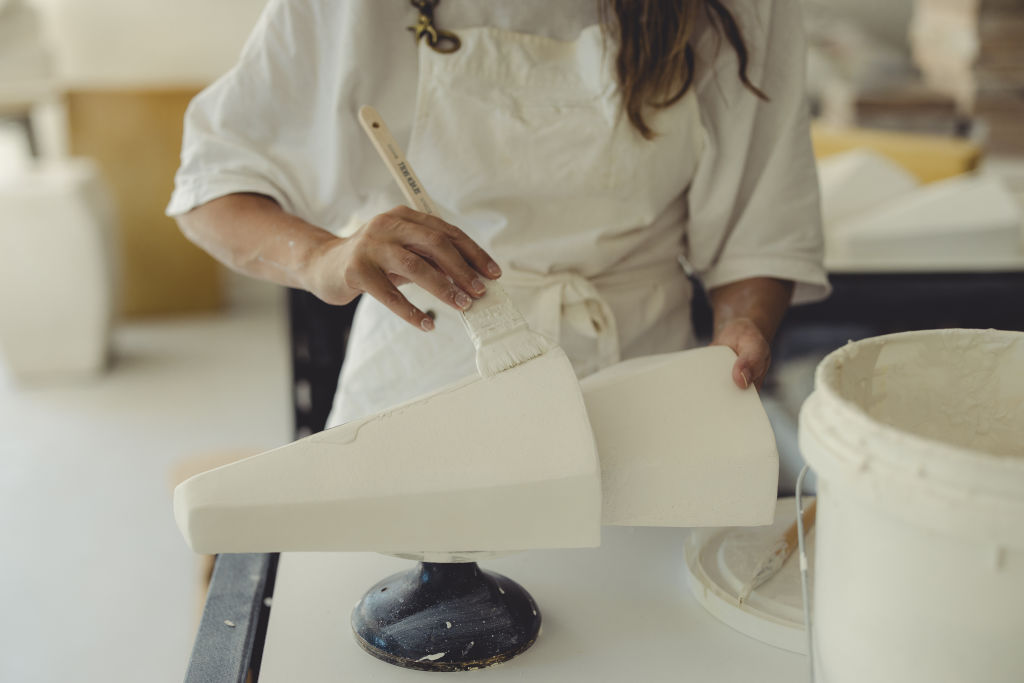
Having been brought up in an outdoorsy family where creativity was encouraged, Nedovic always knew she’d follow an artistic pathway in life. Her stepfather was a builder trained in industrial design. “We were always making things in his workshop and were taught from a young age how to be practical with our hands,” she says. “I joke with a girlfriend, now, that I have more power tools than handbags – it’s just something I learnt through nurture.”
After studying at university, Nedovic worked as a textile designer in the fashion industry for 17 years. She only got into clay when pregnant with her son, Angus, now four (she also has a daughter, Cesca, two). At that point she felt it was time to start her own practice, one that would be compatible with motherhood, but wasn’t sure what that would be.
“I knew I wanted to use my hands again,” Nedovic says. “The textile industry was becoming faster and more digital.” She hadn’t contemplated turning ceramics into a business, however.
“It was purely a hobby – it was me experimenting with clay in the kitchen of our old apartment and just having fun, which was such a nice way to start. I didn’t have any expectations – I really nurtured my creativity and just let it all out.”
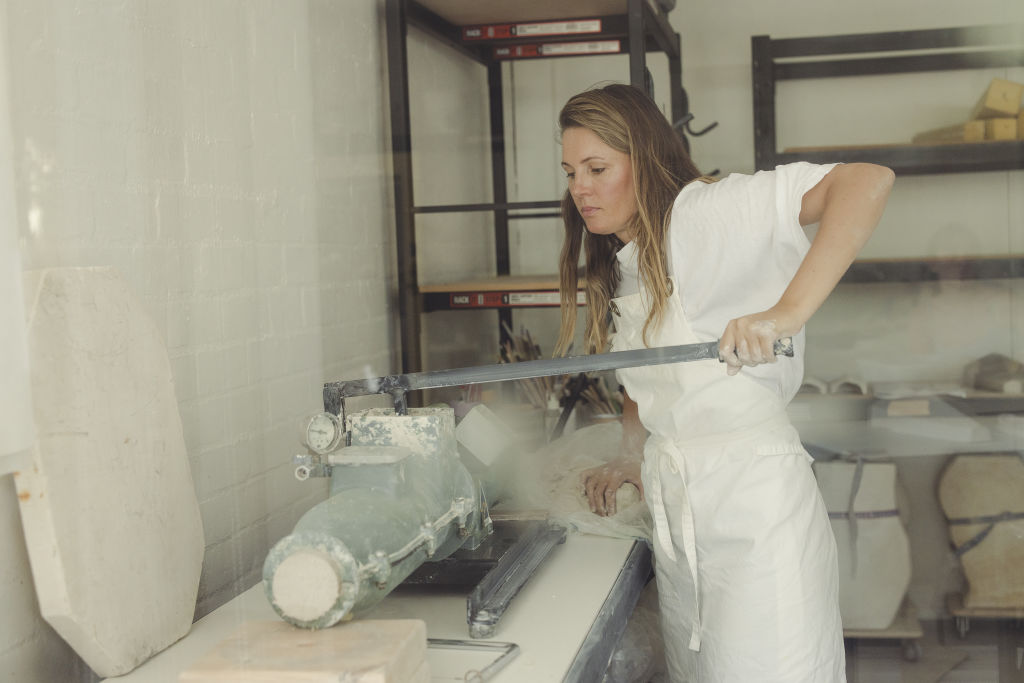
As it turns out, the way Nedovic works in ceramics is not all that different from how she approached textile design. “The foundation of how I design is a play on shapes – how they interconnect and sit harmoniously.” She always carries a small notebook with her and sketches constantly with a black pen. “I feel like my hand will often move in ways my mind hasn’t thought of or my eye doesn’t see – I can draw hundreds of variations of the same design.”
Once Nedovic lands on an idea, she’ll draw it to scale on brown paper – just like patternmaking for fashion – and pin it on the wall. “It can sit there for a few weeks, and if I still like it after that, I’ll start to make it out of clay.”
The introduction of light is considered all through the long design process. “We do lots of little tests – I try to highlight the clay body as much as possible and show the qualities of the material I’m working with through light.”
It was a little trickier when Nedovic first started her practice, she admits. “The electrical wiring was a big challenge. Melbourne was in and out of lockdown in 2020, so I was trying to construct and learn how to build the electrical backplate[s] myself. I eventually engaged a supplier to help me.”
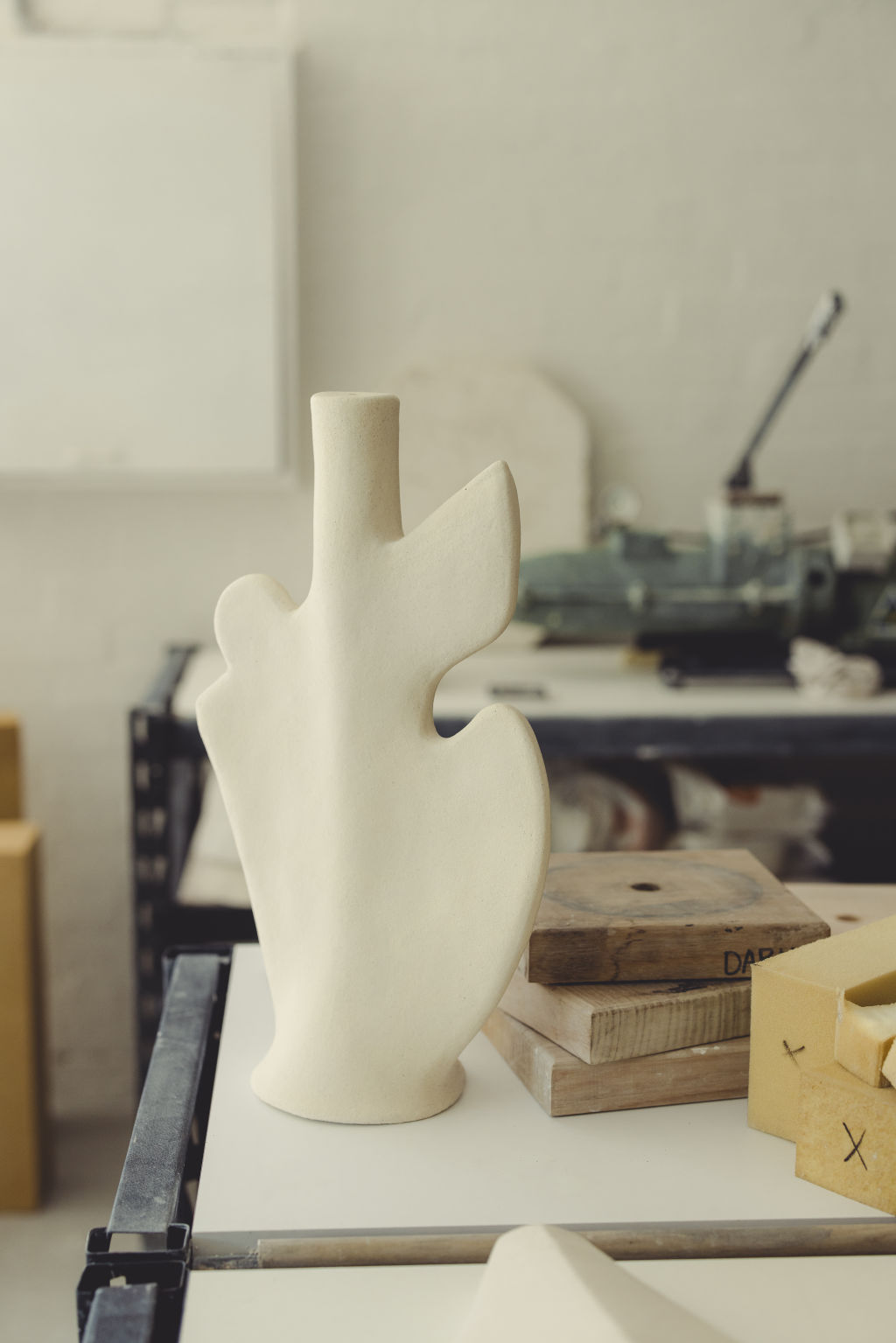
While Nedovic’s work appears to be abstract in form, it can be informed by anything from Spomenik World War II memorials in the former Yugoslavia – her husband’s family is from Montenegro – to the gothic-style Manchester Unity Building in Melbourne’s CBD.
“I used to say that nature was my inspiration, but I actually think being in nature just allows my ideas to come out,” she says. “That is when I am most relaxed.”
Much of her inspiration comes from repetition and patterns. “I love architecture and walking around the city looking at new and old buildings. The old buildings have wonderful brickwork and Victorian filigree detailing, while the new buildings can be monumental and overpowering in scale. I love the repetition of the windows and the cladding.”
Unlike her previous work in textile design, Nedovic’s current practice means she’s involved from start to finish. It’s one of the things she finds most rewarding about working in lighting. “We get the bag of clay, we roll the slabs, we make the design and all the electrics are built in. We own every single step and have total control over it.”
And how she knows whether something works or not is to live with it. “That’s the ultimate test, and I’m happy to say I have lots of my pieces in our own home,” Nedovic says. “They’re often ones that haven’t made the cut – they might be a little bent or have blue flecks from copper electrical wires, but all those small imperfections are beautiful and hold stories and memories for me.”
4 tips for great home lighting
- Layer your lighting: Having different types of light sources – table lamps, wall lights and candles, for instance – at varying heights will give your rooms depth and dimension.
- Don’t be afraid of the dark: Turn off the overhead lights and just put on one or two lights in the room. Play around with darkness as a way to de-emphasise certain areas or to create a space for the eye to rest.
- Learn bulb basics. Stay away from fluorescents and instead buy good quality warm LEDs. These can change the whole feel of a room.
- Light for beauty: Always ramp up the lighting in your bathroom. You want your make-up to look good in the daylight, so try and mimic this with warm white light globes.
This article first appeared in Domain Review, in partnership with Broadsheet.
We recommend
States
Capital Cities
Capital Cities - Rentals
Popular Areas
Allhomes
More
